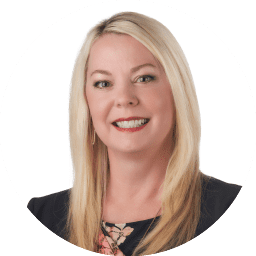It’s hard to believe we’re already approaching the end of 2023. Over the past year, many consumers saw their wallets stretched thinner as elevated interest rates and inflation continued to take a toll.
A recent WSFS Bank Money Trends study found that 38% in the region are spending more money now compared to last year, while only 21% in the region are saving more.
With the New Year just around the corner, now is a great time to take stock of your financial situation and put a plan in place to achieve your goals. Here are tips to help.
Jumpstart Your Savings
One positive tradeoff to rising interest rates is the opportunity it provides to earn interest on your savings.
The WSFS study found that half of regional residents have heard of but never used certificates of deposit or CDs (50%), money market accounts (53%) and high-yield money market accounts (51%).
Many consumers may be unfamiliar with these savings tools after years of a low interest rate environment, but they are making a comeback as they tend to earn a higher interest rate than standard savings accounts.
When it comes to CDs, you will not have access to your funds during the CD’s term, but for money market accounts you will have more flexibility to access your cash as needed.
Assess Your Debt and Explore Your Options
Rising rates have motivated 30% of regional residents to reduce their credit card spending and debt, while an equal percentage are steering clear of loans altogether.
As the New Year approaches, do a “deep dive” on your finances to gauge your debt, whether it is from credit cards, student loans, or a mortgage, to ensure you have a firm grasp on your financial obligations.
If you have multiple loans, lines of credit and outstanding credit card debt, consolidating that debt can help you make a dent in the principle and lower your overall payments even though interest rates are currently elevated. There are multiple ways to do so. You can utilize personal loans for consolidation, or if you’re a homeowner, a home equity loan or home equity line of credit (HELOC).
Another option is to consolidate on a credit card with a 0% introductory rate, you’ll just need to read the terms and conditions carefully to understand any fees and what the interest rate will be after the promotion ends.
Speaking with your local banker can be a good way to explore your lending options and determine what works best for your situation.
Keep Your Spending Habits Nimble
The WSFS study found that 37% in the region are slashing non-essential expenditures due to rising interest rates.
While changing your spending patterns can be difficult, especially in today’s world where shopping online and deferring payments is just a few clicks away, if your goal is to really cut back and save, it is important to take a moment to think through your discretionary spending and the impact to your financial situation.
Some areas where you can look for savings include cancelling unused subscription services and contacting providers of services like internet, cable and your mobile phone to negotiate a lower price. Using a debit card as opposed to a credit card, monitoring your purchases regularly through online and mobile banking and establishing alerts for low balances are some of the budgeting methods many consumers utilize successfully.
If you need more help with reviewing your finances and putting a plan in place to reach your goals, consider scheduling an appointment with your local banker, who can provide tips, advice and resources to assist.

Helping you boost your financial intelligence.
Read our financial resources from your friends at WSFS.




